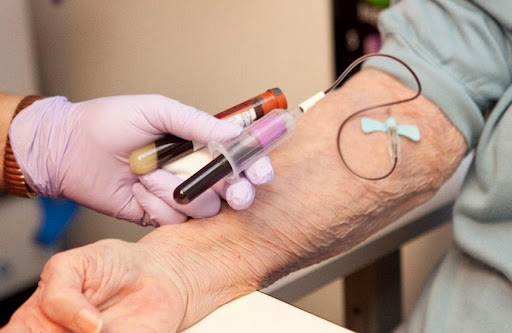4 Simple Techniques For Northeast Medical Institute - New Haven Campus Phlebotomy Course & Cna Class
4 Simple Techniques For Northeast Medical Institute - New Haven Campus Phlebotomy Course & Cna Class
Blog Article
The Basic Principles Of Northeast Medical Institute - New Haven Campus Phlebotomy Course & Cna Class
Table of ContentsThe Best Guide To Northeast Medical Institute - New Haven Campus Phlebotomy Course & Cna ClassThe Best Strategy To Use For Northeast Medical Institute - New Haven Campus Phlebotomy Course & Cna ClassAll About Northeast Medical Institute - New Haven Campus Phlebotomy Course & Cna ClassHow Northeast Medical Institute - New Haven Campus Phlebotomy Course & Cna Class can Save You Time, Stress, and Money.Facts About Northeast Medical Institute - New Haven Campus Phlebotomy Course & Cna Class RevealedNot known Incorrect Statements About Northeast Medical Institute - New Haven Campus Phlebotomy Course & Cna Class
Nevertheless, making use of such tools should be gone along with by other infection avoidance and control methods, and training in their usage. Not all security gadgets apply to phlebotomy. Prior to selecting a safety-engineered device, users should thoroughly investigate available devices to establish their proper use, compatibility with existing phlebotomy practices, and efficacy in safeguarding staff and people (12, 33).For settings with low resources, price is a motoring element in purchase of safety-engineered gadgets. Where safety-engineered devices are not available, competent use of a needle and syringe is appropriate.
In the blood-sampling area for an outpatient division or clinic, provide a comfortable reclining couch with an arm rest.
The Best Strategy To Use For Northeast Medical Institute - New Haven Campus Phlebotomy Course & Cna Class
Make certain that the signs for blood tasting are clearly defined, either in a written method or in documented instructions (e.g. in a laboratory kind). In any way times, adhere to the approaches for infection prevention and control provided in Table 2.2. Infection avoidance and control techniques. Gather all the devices needed for the procedure and place it within risk-free and very easy reach on a tray or cart, guaranteeing that all the items are plainly visible.
Introduce on your own to the person, and ask the person to specify their full name. Inspect that the research laboratory type matches the person's identity (i.e. match the person's information with the lab kind, to ensure accurate identification).
Make the individual comfortable in a supine placement (preferably). Area a clean paper or towel under the patient's arm. Review the test to be done (see Annex F) and get spoken consent. The person has a right to refuse a test at any moment prior to the blood sampling, so it is very important to make certain that the patient has recognized the procedure.
The 10-Second Trick For Northeast Medical Institute - New Haven Campus Phlebotomy Course & Cna Class
Extend the person's arm and check the antecubital fossa or forearm. Situate a capillary of an excellent dimension that is noticeable, straight and clear. The representation in Area 2.3, shows usual placements of the vessels, however several variations are possible. The mean cubital vein exists between muscle mass and is usually one of the most easy to penetrate.
DO NOT put the needle where veins are diverting, since this raises the opportunity of a haematoma. The vein should be noticeable without applying the tourniquet. Situating the capillary will certainly aid in figuring out the proper dimension of needle. Use the tourniquet about 45 finger widths over the venepuncture website and re-examine the vein.
Specimens from central lines lug a threat of contamination or incorrect research laboratory examination outcomes. It is acceptable, however not ideal, to attract blood specimens when very first introducing an in-dwelling venous tool, before read the article attaching the cannula to the intravenous fluids.
What Does Northeast Medical Institute - New Haven Campus Phlebotomy Course & Cna Class Mean?
Allow the area to completely dry. Failure to enable adequate contact time boosts the risk of contamination. DO NOT touch the cleansed site; in specific, DO NOT put a finger over the blood vessel to guide the shaft of the exposed needle. It the website is touched, repeat the sanitation. Perform venepuncture as follows.
Ask the patient to form a clenched fist so the veins are much more popular. Enter the vein promptly at a 30 level angle or much less, and proceed to present the needle along the capillary at the easiest angle of entry - PCT Training. As soon as enough blood has actually been gathered, release the tourniquet prior to withdrawing the needle
The Northeast Medical Institute - New Haven Campus Phlebotomy Course & Cna Class PDFs
Withdraw the needle carefully and use gentle stress to the site with a clean gauze or dry cotton-wool round. Ask the individual to hold the gauze or cotton wool in area, with the arm extended and elevated. Ask the individual NOT to bend the arm, due to the fact that doing so causes a haematoma.

Indicators on Northeast Medical Institute - New Haven Campus Phlebotomy Course & Cna Class You Need To Know
Where possible, keep the tubes in a shelf and relocate the shelf in the direction of you - https://www.blogtalkradio.com/gordonmarvin28. If the example tube does not have a rubber stopper, inject incredibly slowly into the tube as lessening the pressure and velocity made use of to move the sampling lowers the threat of haemolysis.

Report this page